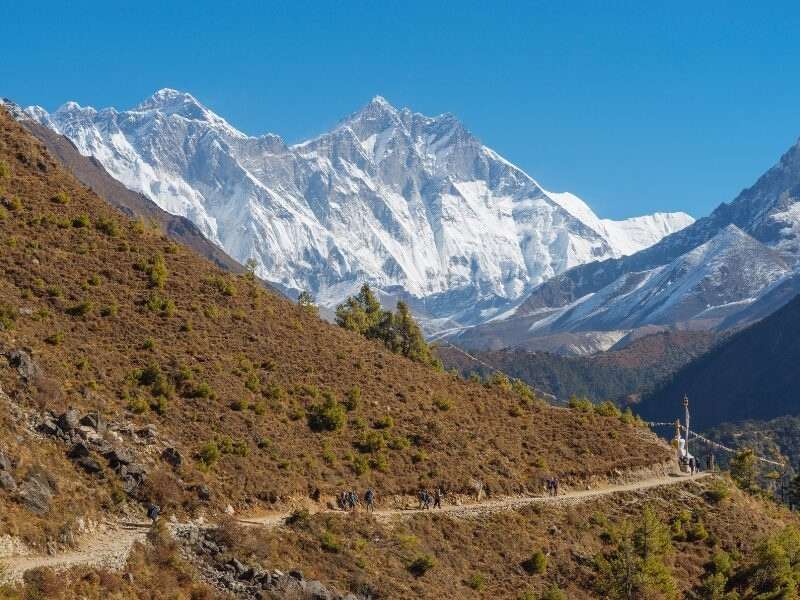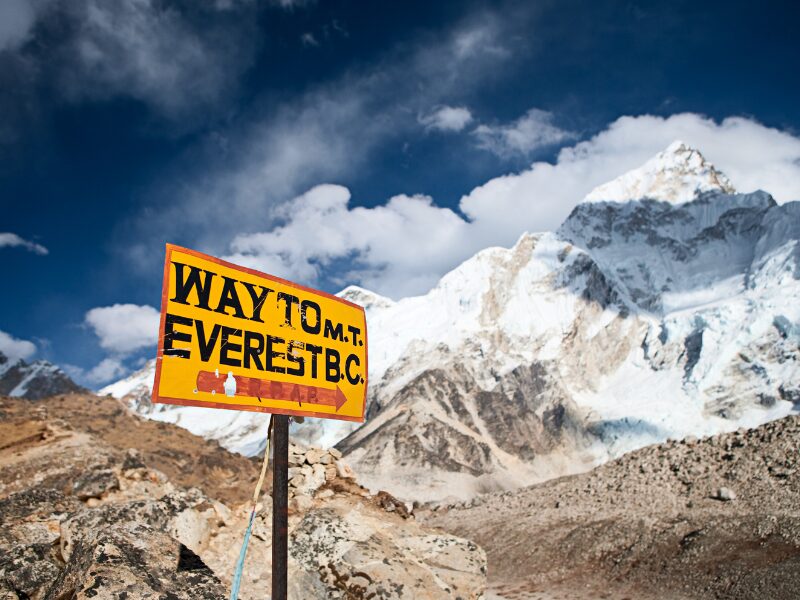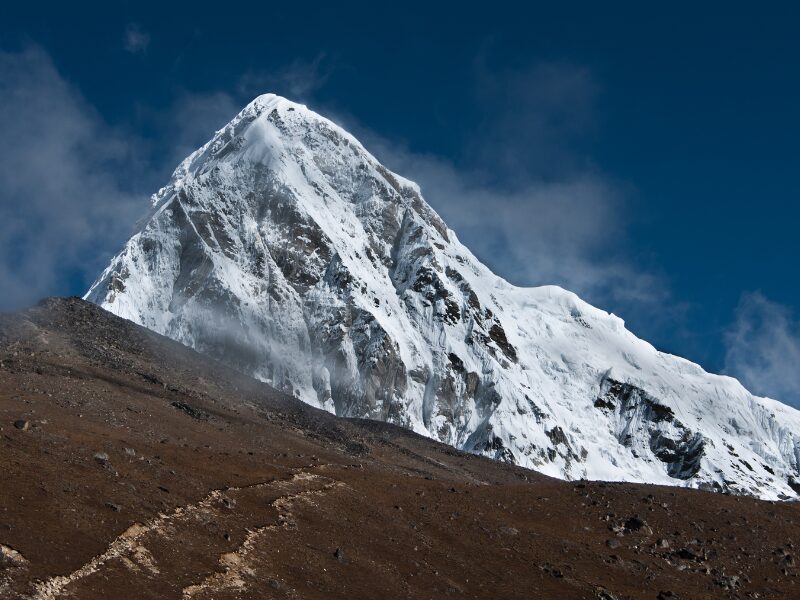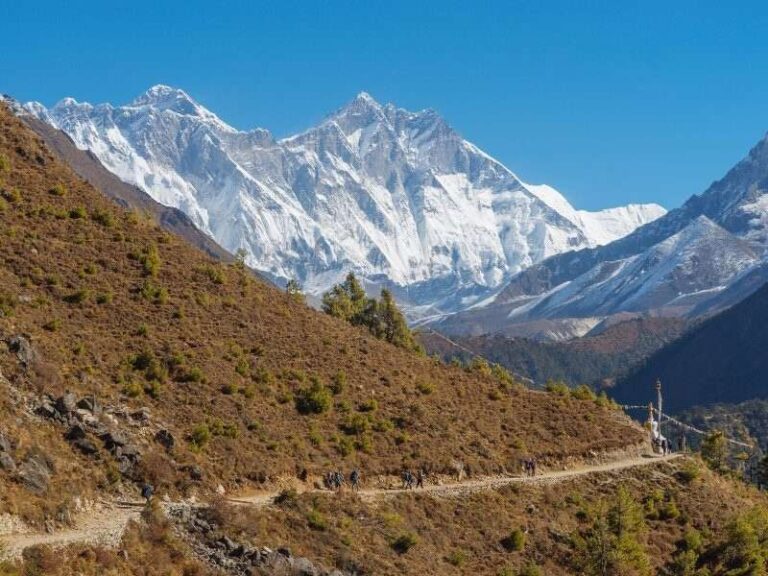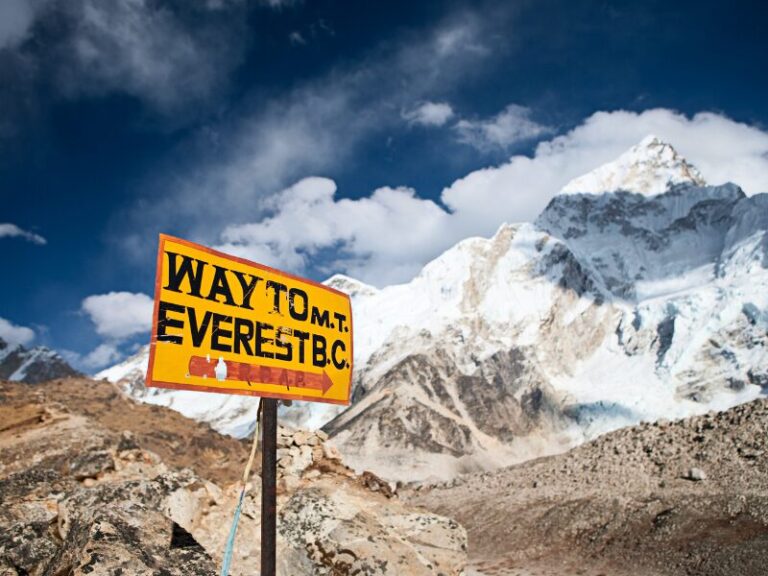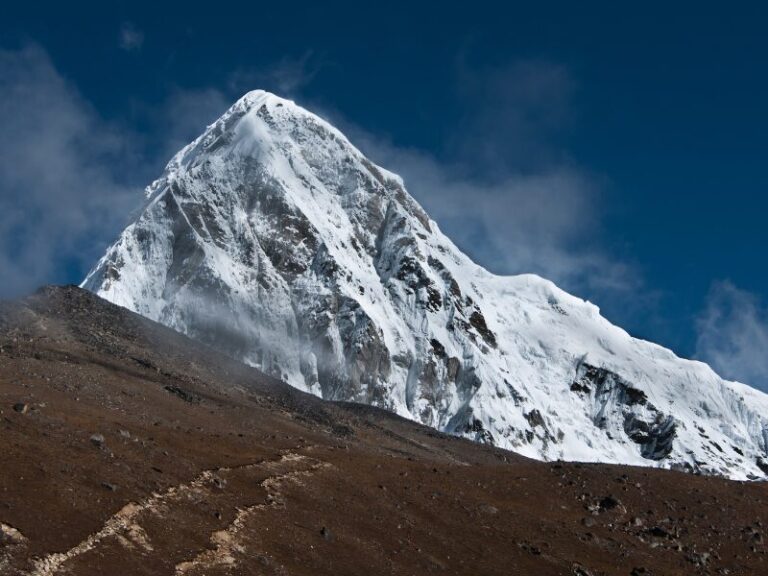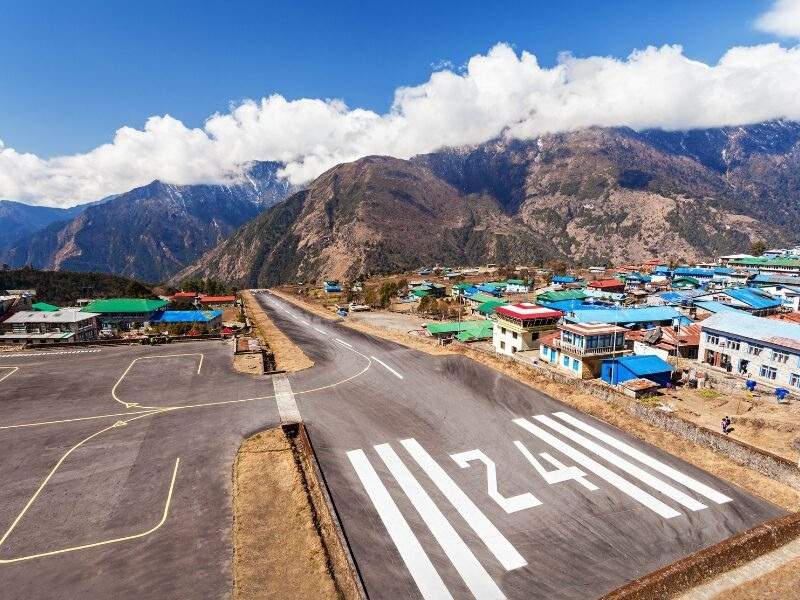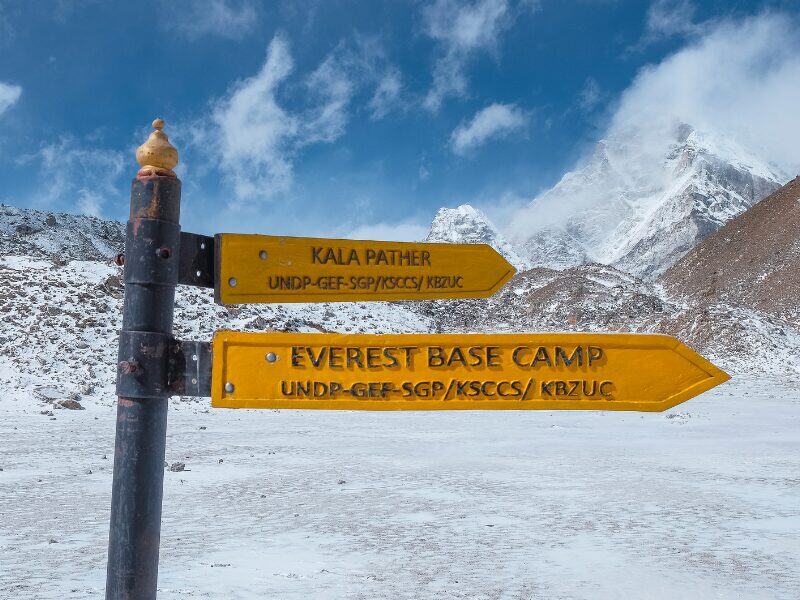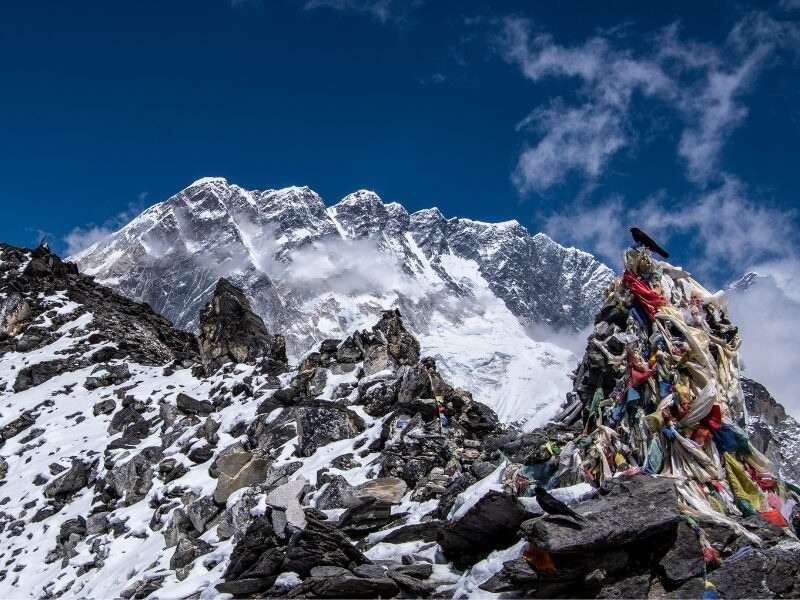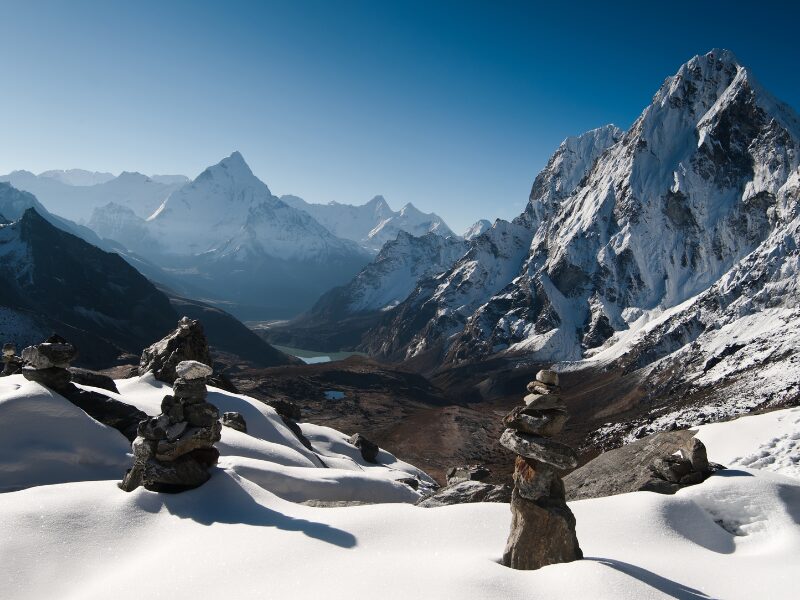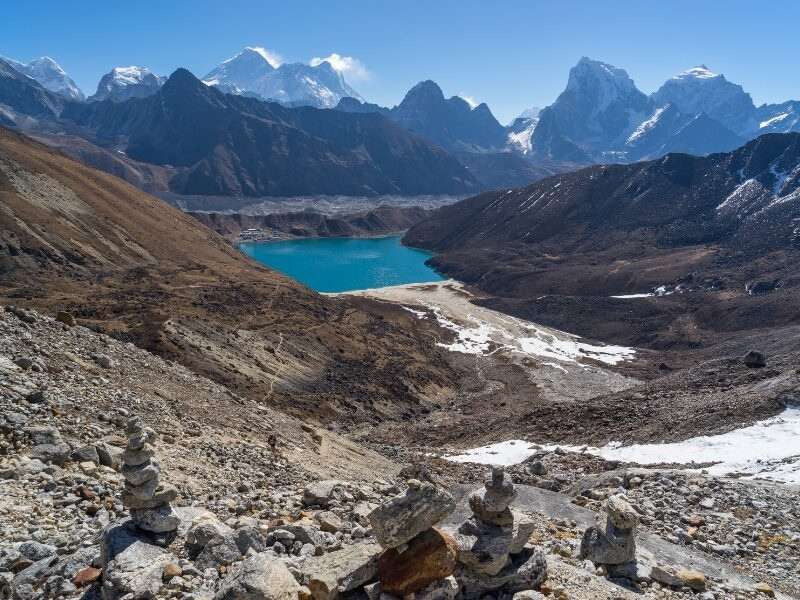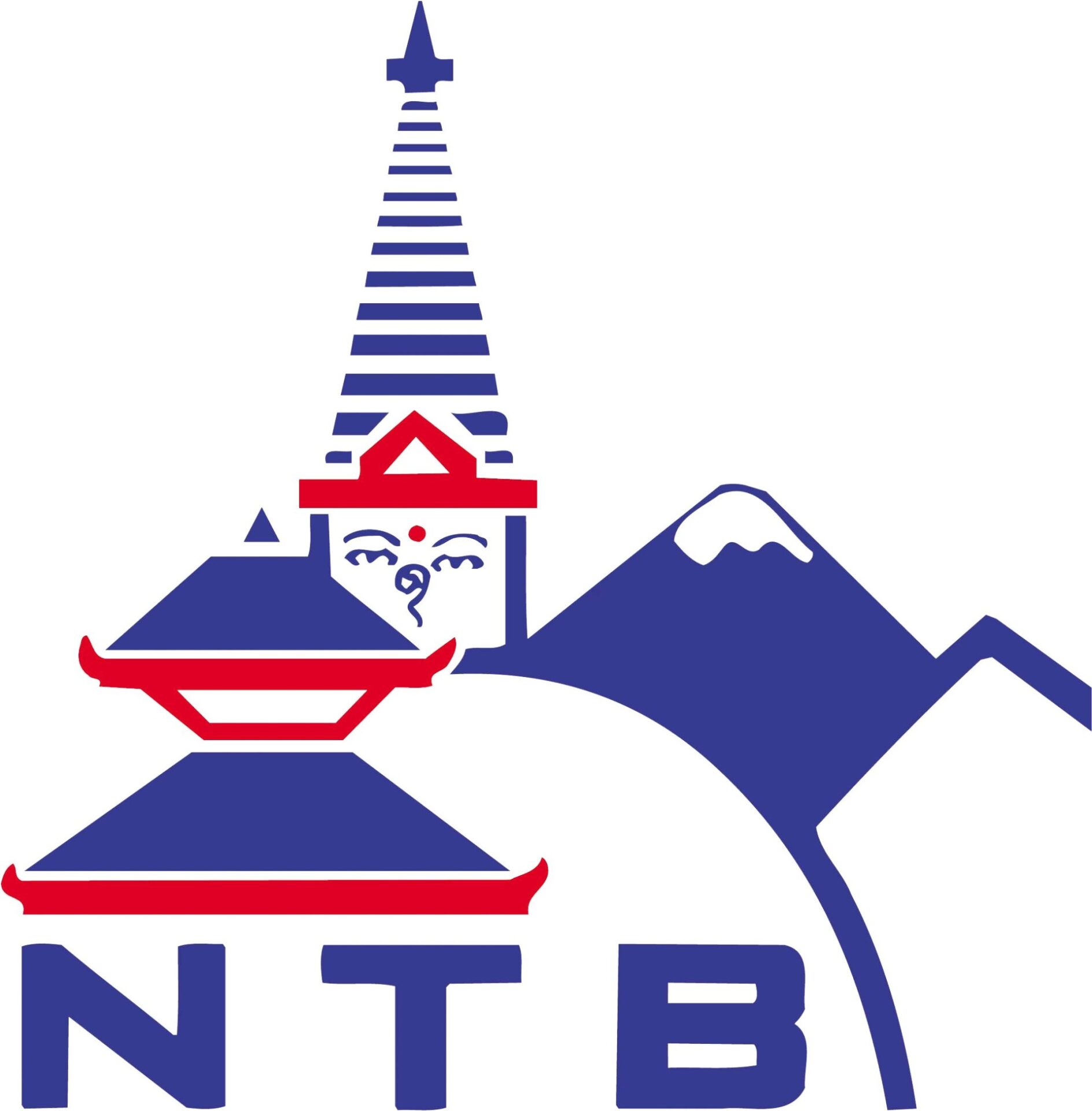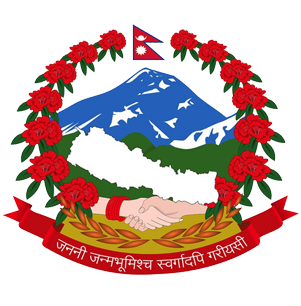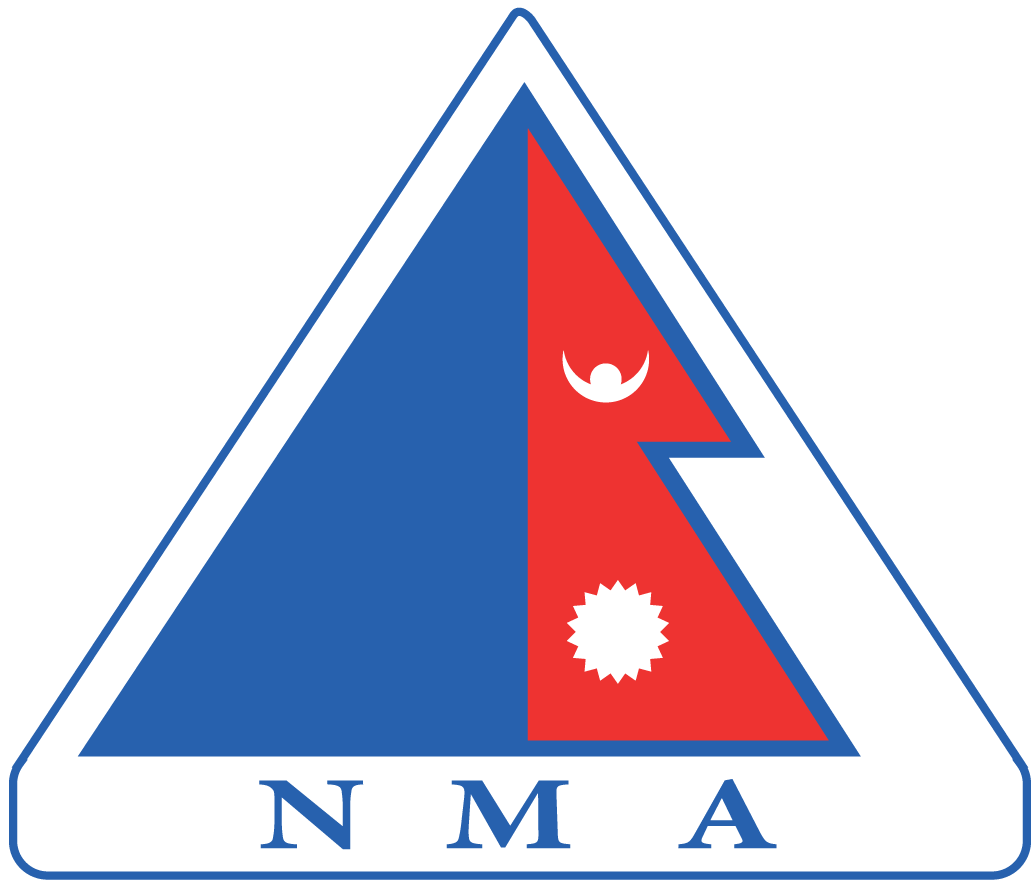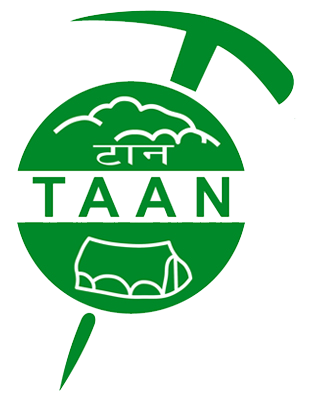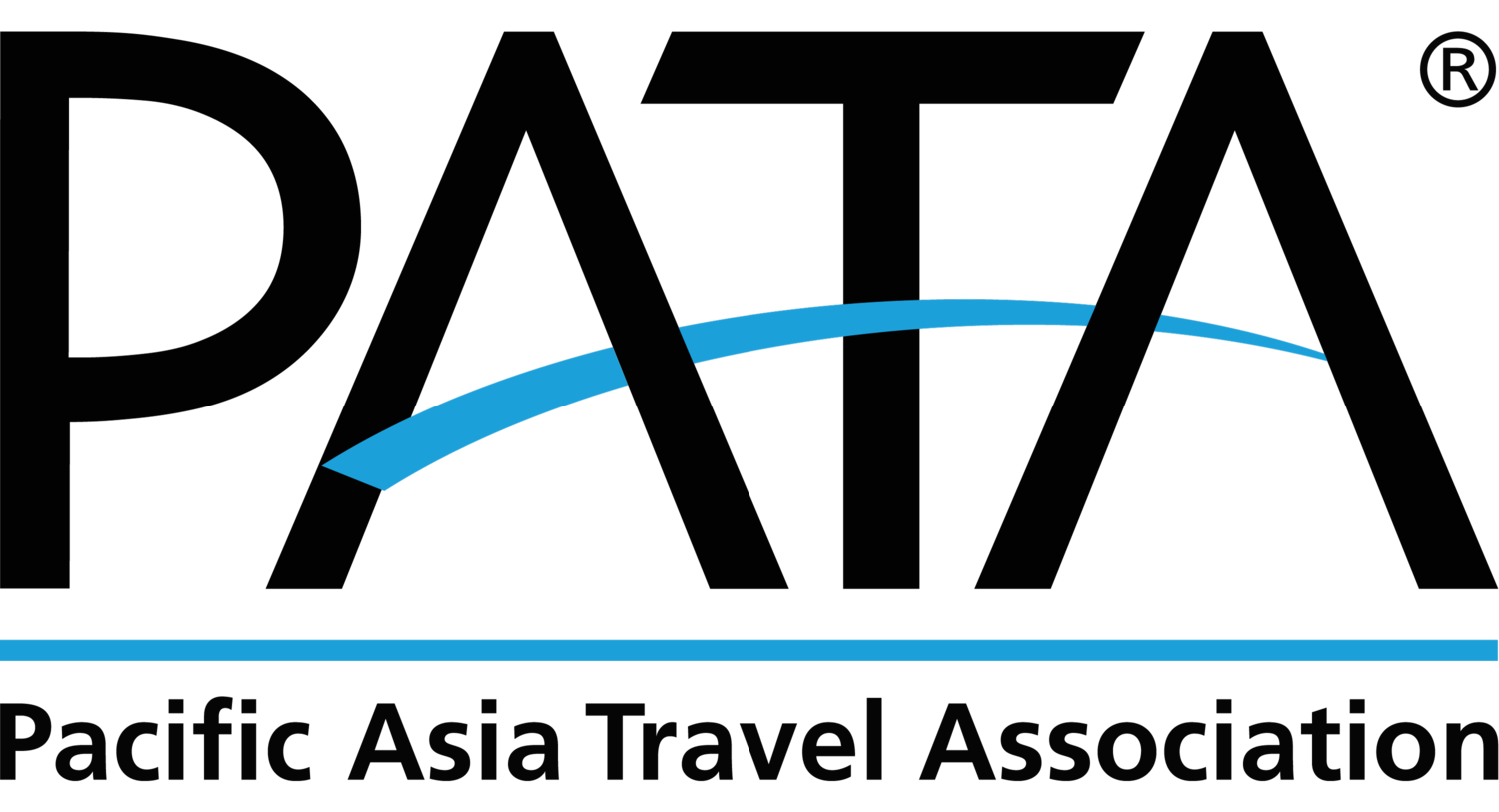Everest 3 Pass Trek
Everest 3 Pass Trek: Experience Adventure in Nepal’s Khumbu Region!!
The Everest 3 Pass Trek is a thrilling adventure in Nepal’s Khumbu region, offering breathtaking landscapes and stunning views of the world’s highest peaks.
The Everest 3 Pass Trek is a challenging and adventurous trekking route in the Everest region of Nepal. This trek takes you through some of the most breathtaking landscapes in the Khumbu region, offering stunning views of the world’s highest peaks.
The three high mountain passes on this trek are Kongma La Pass (5,535 m), Cho La Pass (5,420 m), and Renjo La Pass (5,360 m). Kongma La Pass offers panoramic views of the Khumbu Glacier and surrounding peaks. Cho La Pass involves a challenging glacier crossing and provides stunning views of Mt. Ama Dablam. Renjo La Pass is known for its breathtaking views of Mt. Everest, Mt. Cho Oyo, Mt. Lhotse, and Mt. Makalu, among other peaks.
Trip Overview
 Start: Kathmandu
Start: Kathmandu  End: Kathmandu
End: Kathmandu Outline Itinerary
Kathmandu (Arrival) – Transfer to Hotel (Private Transfer)
Kathmandu (1,400 m)Kathmandu – Lukla (Fly – Flight Transfer) – Phakding
Lukla (2,860 m; 30 mins- fly) Phakding (2,610 m; 3 hrs)Phakding – Namche
Namche (3,440 m; 6 hrs)Acclimatization Day in Namche Bazar
Namche Bazar (3,440 m)Namche – Tengboche
Tengboche (3,860 m; 6 hrs.)Tengboche - Dingboche
Dingboche (4,410 m; 6 hrs)Acclimatization Day in Dingboche
Dingboche (4,410 m)Dingboche – Chhukhung
Chhukhung (4,730 m; 4 hrs)Chhukhung – Kongma La Pass – Lobuche
Kongma La Pass (5,535 m) Lobuche (4,910 m; 7 hrs)Lobuche – Gorakshep (Afternoon hike to Kalapatthar)
Gorakshep (5,164; 7 hrs) Kalapatthar (5,555 m)Gorakshep – Lobuche (Morning hike to Everest Base Camp)
Lobuche (4,910 m; 8 hrs) Everest Base Camp (5364m)Lobuche – Dzonglha
Dzonglha (4,830 m; 4 hrs)Dzonglha – Cho La Pass – Gokyo
Cho La Pass (5,420 m) Gokyo (4,790 m; 7 hrs)Gokyo
Gokyo (4,790 m)Gokyo – Renjo La pass – Lungde
Renjo La Pass (5,340 m) Lungde (4,380 m; 7 hrs)Lungde – Namche
Namche (3,440 m; 6 hrs)Namche – Lukla
Lukla (2,840m; 6 hrs)Luka – Kathmandu (Fly – Flight Transfer)
Kathmandu (1,400 m; 30 mins)Kathmandu (Departure)
Price Inclusion
- Airport transfers (Domestic/ International) on a tourist vehicle
- Domestic flight ticket (Kathmandu / Lukla / Kathmandu)
- Entire accommodation during the trek – 2 nights at hotel in Kathmandu, and 16 nights in lodges/guesthouse during trek to 3 pass treks
- Hotel breakfast during the stay at Kathmandu
- Experienced, government licensed, English-speaking or another language trekking guide
- All necessary permits for Sagarmatha National Park and TIMS (Trekkers’ Information Management System)
- Porters during the trek for carrying luggage (1 porter for every 2 pax)
- All government taxes and administrative expenses
- Local staff insurances
Price Exclusion
- International flight tickets and Nepal Entry Visa
- Personal travel insurance
- Any meal during the Trek
- Any expenses of a personnel nature, e.g., telephone calls, laundry, table drinks, etc.
- Any Tips to Guides, Drivers, and Trekking Staffs
- Any entrance fees for cameras and video cameras at the monuments
- Any other services not mentioned above
- Cost of any emergency evacuation, strikes, etc.
Detail Itinerary
Expand AllKathmandu (Arrival) – Transfer to Hotel (Private Transfer)
Upon arrival in Kathmandu, the capital city of Nepal, our representative will be waiting at the airport for your welcome. Then board a private vehicle and be transferred to your hotel. Check into your hotel and rest after your journey.
Depending on your arrival time, you may have the opportunity to explore ancient temples and vibrant markets and experience the unique atmosphere of Nepalese urban life.
Kathmandu – Lukla (Fly – Flight Transfer) – Phakding
You will experience a short yet thrilling flight to Lukla in the early morning. You will see an incredible shift in scenery and the climate on your route, which is an excitement in itself. After landing at one of the world’s most dangerous airports, Tenzing Hillary Airport, you’ll start the journey to Phakding. Phakding is a beautiful settlement along the Dudh Kosi River. You’ll come across prayer flags, mani walls, and little monasteries along the route, providing an insight into the region’s rich religious and cultural history.
Phakding – Namche
Today, your journey takes you to Namche Bazar, the gateway to the Everest region. The trail winds through lush rhododendron trees and several suspension bridges that provide views of Everest and other nearby peaks. It provides amazing views of the Himalayan peaks.
Namche is a thriving Sherpa town where you can buy regional goods and get to know the welcoming Sherpa people. Explore the Sherpa Culture Museum upon arrival to learn more about the rich cultural heritage of the region.
Acclimatization Day in Namche Bazar
Today is your rest day. Your body will adjust to the altitude, and you can enjoy breathtaking panoramic views of Everest, Lhotse, and Ama Dablam by exploring the Namche Bazar or hiking to viewpoints around Namche. You can also spend the day exploring the town, visiting the Everest Photo Gallery, and interacting with local Sherpa residents.
Namche – Tengboche
The trail descends early in the morning and then climbs up to Tengboche. It is a rocky trail towards Tengboche’s path. Ascending to Tengboche, the path passes through charming villages, lush rhododendron woods, glaciers, rivers, and monasteries and offers more breath-taking panoramas of Mt. Everest, Ama Dablam, Lhotse, and Nuptse.
The Tengboche Monastery is the reason for Tengboche’s fame. It serves as the region’s hub for both culture and spirituality. In the evening, you can watch Lamas pray while taking in the calm environment.
Tengboche - Dingboche
Today, you will head towards Dingboche, where you will pass through alpine landscapes along the way with breathtaking views of the Himalayan peaks. You will follow the Imja Khola and then climb up to Dingboches. The charming village of Dingboche is encircled by stone walls that shield crops from strong winds. You will explore the local culture and enjoy the tranquility of this high-altitude settlement.
Acclimatization Day in Dingboche
Today will be your acclimatization day. In Dingboche, there are things to do, like relax, explore, or get to know the locals. For breathtaking views of the surrounding peaks or to get ready for the higher altitudes, you can also hike to viewpoints like Nagarjun Hill.
Dingboche – Chhukhung
After breakfast, you will ascend a few steps through rough stone-walled fields and Imja Khola Valley before entering the glacier mountains amidst towering Himalayas. You will continue your trail with a fantastic view of the Ama Dablam and Amphu Labsa Mountains. Then, trail ahead, intersected by icy streams. After a few hours of walking, you will reach Chhukung and rest for a long walk tomorrow.
Chhukhung – Kongma La Pass – Lobuche
Today, you will have an early morning trek to reach the highest pass of the trek, Kongma La Pass. You have 2 different trails to reach Kongma La pass: one is the trail over a hill to the northwest of Chhukung over the Nupste Glacier moraines or a hike back to Bibre and trekking the trail above the Niyang Kola.
Upon reaching the top of the Kongma La Pass, which is marked by cairns and Buddhist prayer flags, after viewing the beautiful views of many Himalayas, including Lobuche, Mere Peak, Nuptse, and many more, you will descend to Lobuche.
Lobuche – Gorakshep (Afternoon hike to Kalapatthar)
Today the path takes you to the Gorakhshep before Everest Base Camp. To reach Gorakshep village, you will walk along the Khumbu glacier while enjoying the magnificent view of Mt. Nupstse. As you soon reach Gorakshep Village, you will prepare to ascend Kala Patthar, the trek’s highest point at 5545 meters, after resting a few hours.
The afternoon hike to Kala Patthar gives breathtaking panoramic sunset views of Mt. Everest and the neighboring peaks. Kala Patthar is an excellent vantage point for the incredible view of Mt. Lhotse, Mt. Nuptse, Mt. Pumori, and Mt. Everest.
Gorakshep – Lobuche (Morning hike to Everest Base Camp)
Your day will begin with a memorable yet challenging, rugged terrain morning climb to Everest Base Camp, where you’ll be able to experience the unique atmosphere at the base camp and marvel at the surrounding peaks.
Take your time for the magnificent views of the Khumbu Glacier, Khumbu Icefall, Mt. Pumori, Mt. Nuptse, Mt. Khumbuste, and Mt. Everest. Enjoy your time with the magnificent views at the base of the world’s highest mountain. After this memorable hike to EBC, you will descend to Lobuche, following the same trail as earlier.
Lobuche – Dzonglha
From Lobuche,you will trek downhill on a trail alongside the Khumbu Glacier. On the way, you can admire the view of the majestic peak. Your tails pass through a stupa and tombstones in the distance. After walking for a while, you will begin to ascend, and you will see Chola Tsho Lake nearby.
You continue your walk and pass another lake, which is a lot smaller than Chola Tsho Lake. You cross the Chola Khola bridge before reaching Dzongla.
Dzonglha – Cho La Pass – Gokyo
Today, you will start your trek in the early morning to avoid bad weather in the Cho La Pass. You will trek through the difficult route of steeply loose rock to reach Cho La Pass, which involves a challenging glacier crossing and provides stunning views of Mt. Ama Dablam. After crossing Cho La Pass, you will descend towards Gokyo. You will pass the Ngozumpa glacier (the longest glacier in Nepal) and witness a beautiful view of Kantaga and Mt. Cho Oyu.
Gokyo
Today, you will hike to Gokyo Ri in the early morning to experience a magnificent sunrise with a great panorama of the magnificent Himalayas and gorgeous turquoise lakes and glaciers. You will get to experience the Gokyo Valley.
You will hike down to the valley to explore the Gokyo lakes, which include Gokyo Cho, Thonak Cho, Gyazumpa Cho, Tanjung Cho, Ngozumpa Cho, and Longbanga Cho, after admiring the sunrise view. Among the six series of Gokyo lakes, Gokyo Cho is the largest and most prominent of these lakes.
Gokyo – Renjo La pass – Lungde
Today you will cross the last pass from the Everest 3-pass trek. You will start your trek by ascending towards the Renjo La pass with its magnificent views of the Himalayan and Rolwaling ranges. The view from Renjo La Pass is outstanding, with a glimpse of Mt. Everest, Ngozzumpa Glacier, and Gokyo Village.
After crossing the final pass, your trail descends towards the south bank of Angladumba Tsho Lake. After descending from the hazardous trail, you will walk down a narrow valley to reach Lungde.
Lungde – Namche
After having breakfast, you will start your trek towards Namche. On the way, you will witness the amazing snow peaks and Thame Monastery in Thame village. Then you will descend towards Namche Bazar, leaving the forest behind.
Namche – Lukla
Your memorable and adventurous trip comes to an end as you make your way back to Lukla, leaving Namche. After having breakfast at Namche, you will walk to the same path as earlier. After reaching Lukla, get some time to relax and explore the village in your free time.
Luka – Kathmandu (Fly – Flight Transfer)
After taking off from one of the world’s most dangerous airports, Tenzing Hillary Airport, you will experience a short yet thrilling flight from Lukla to Kathmandu in the early morning. You will see an incredible shift in scenery and the climate on your flight, which is an excitement in itself.
The flight back to Kathmandu provides a bird’s-eye view of the Himalayas. As you return to the bustling city of Kathmandu, you can explore some of the city’s cultural and historical areas.
Kathmandu (Departure)
Depending on your flight schedule, our representative will escort you towards the airport. Before your fight schedule starts, you may have some free time in Kathmandu for last-minute shopping or sightseeing.
Why you'll love this trip
- A thrilling flight to Lukla, considered one of the world’s most dangerous airports
- Explore and experience the vibrant Sherpa town, their culture, and the warmth of Sherpa hospitality.
- Breathtaking panoramic views of the world’s highest peaks, including Mount Everest, Lhotse, Nuptse, Makalu, Cho Oyu, Ama Dablam, and more.
- Visit the iconic Everest Base Camp, standing at the foot of the world’s highest peak.
- Hike to Kala Patthar, a famous vantage point that provides one of the best views.
- Explore the pristine Gokyo Lakes, a series of turquoise glacial lakes with stunning reflections of the surrounding Himalayan peaks.
- Challenge and awe-inspiring views from the three high mountain passes: Kongma La Pass (5,535 m), Cho La Pass (5,420 m), and Renjo La Pass (5,360 m).
- Encounter a variety of flora and fauna in Sagarmatha National Park.
When To Visit
The best time to begin on the Everest 3 Pass trek is during the spring and autumn seasons, specifically in the months of September to November and late March to May. These times of year are perfect for trekking through the difficult terrain of the three high mountain passes: Renjo La, Cho La, and Kongma La. They offer clear skies, mild temperatures, and generally stable weather. These months provide ideal trekking conditions and stunning views of the majestic peaks of the Everest region, making them the ideal time for an amazing and fulfilling journey.

Cannot see your date or not satisfied with the itinerary? We may be able to add new trip dates.
Contact UsElevation Chart
Trip Gallery
FAQs for Everest 3 Pass Trek
What is the level of difficulty for the Everest 3 Pass trek?
The Everest 3 Pass trek is considered challenging due to its high altitudes, technical terrain, and unpredictable weather. Trekkers should be physically fit and prepared for long days of walking.
Are there any health precautions for the Everest 3 Pass trek?
Trekkers should be aware of altitude-related issues and acclimatize properly. It’s advisable to carry a basic medical kit, stay hydrated, and be cautious about food hygiene. A thorough pre-trip health check-up is recommended.
How should one prepare for the Everest 3 Pass trek?
Adequate physical fitness, acclimatization, and prior trekking experience at high altitudes are crucial. It’s advisable to undergo a thorough health checkup before embarking on the trek and to pack appropriate gear, including warm clothing and a good pair of trekking boots.
Are guides and porters recommended for the trek?
While it’s possible to trek independently, many trekkers opt for experienced guides and porters to enhance safety, navigation, and lighten the load. Guides are especially helpful for navigating challenging sections and ensuring proper acclimatization.
What are the potential risks and challenges of the Everest 3 Pass trek?
Risks include altitude sickness, challenging weather conditions, and technical difficulties in crossing the high mountain passes. Proper acclimatization, a well-planned itinerary, and adherence to safety guidelines are essential to reducing these risks.

